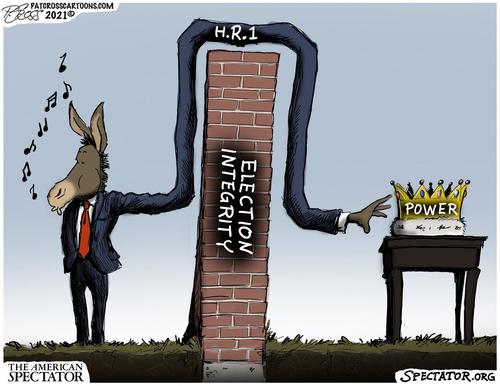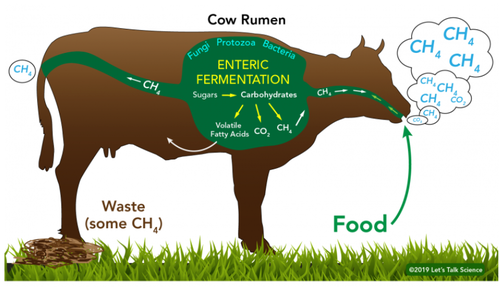Authored by Julie Kelly via AmGreatness.com,
No one killed Brian Sicknick. But that isn’t stopping the Biden Justice Department, the media, every Democratic politician, and now Sicknick’s loved ones from perpetuating the lie.

On August 26, 2020, Kevin Phomma was arrested in Portland for assaulting several police officers with bear spray during that city’s nonstop siege by Antifa and Black Lives Matters protesters. Phomma and others surrounded the federal Immigration and Customs Enforcement facility, blocked traffic, and fought with law enforcement.
In a press release announcing his arrest, the Justice Department said, “Phomma doused several officers with pepper spray while they attempted to arrest him. Once in custody, officers discovered the pepper spray was in fact a powerful bear deterrent pepper spray.”
Phomma, 26, also had a three-inch dagger in a sheath strapped to his left hip.
He was charged with a dozen counts ranging from civil disorder—a felony—to unlawful use of mace. He appears to contribute little to society except for his skills as a professional protester.
A few days after his arrest, Phomma was released on bail.
His trial is still pending; his lawyers claim the civil disorder charge is “a vestige of opposition to civil rights for Black Americans.” (He does not appear to be black.)
While Phomma roams free, acting as the aggrieved party rather than the aggressor, the two men who allegedly sprayed officer Brian Sicknick with a chemical irritant on January 6 are not so lucky.
George Tanios and Julian Khater were arrested in March and accused of “attacking” Sicknick with a chemical spray; the indictment, not coincidentally, was filed just a few weeks after the initial account of Sicknick’s death—the murder-by-fire-extinguisher story—was exposed as a lie.
Desperate to sustain the lie that a police officer was killed by bloodthirsty Trump cultists on January 6, the media and Democrats quickly pivoted to the idea Sicknick died from an allergic reaction to the bear spray.
Tanios and Khater, who traveled together to hear Donald Trump’s speech that day, face four charges of using and carrying the “dangerous and deadly weapon” on January 6.
Unlike Kevin Phomma, one charge filed against Tanios and Khater is “assault on a federal officer with a dangerous weapon.”
Unlike Phomma and his accomplices, Tanios and Khater also are charged with conspiracy for allegedly pre-planning the assault on a federal officer.
Also unlike Phomma, neither man has been able to post bail; a federal judge last month agreed with Joe Biden’s Justice Department to keep the pair behind bars awaiting trial. D.C. District Court Judge Thomas Hogan, a Reagan appointee, even rejected a $15 million bond package backed by 16 relatives of Julian Khater—an amount three times higher than the court-ordered bail for Harvey Weinstein, as one reporter noted.
“They attacked uniformed police officers and I can’t get around that,” Hogan said in a May 11 hearing. Hogan, 83, repeatedly claimed Sicknick was “violently attacked.”
Even though Hogan acknowledged their “excellent backgrounds,” the men are a danger to their community, the judge argued, because they attempted to “halt democratic processes in their attack on Congress.”
Since they didn’t get the Kevin Phomma treatment, Tanios and Khater, like dozens of Capitol defendants, now languish under solitary confinement conditions in a D.C. jail specifically used to house January 6 detainees.
Neither man has a criminal record. Tanios, 39, is a business owner in Morgantown, West Virginia, and has three children under the age of five. Khater, 32, is a college graduate who worked for the family’s restaurant business until one was forced to shut down last year due to the pandemic.
But because of their involvement in the events of January 6, they are being treated as hardened criminals. “[W]ithout the violent efforts of these specific individuals to injure and/or incapacitate law enforcement officers who were executing their duties and protecting our democracy, the barrier lines would never have been breached, and rioters would likely not have gained entry into the Capitol Building,” prosecutors wrote to the court in April seeking pre-trial detention. “The defendants were spokes in the wheel that caused the historic events of January 6, 2021, and they are thus a danger to our society and a threat to the peaceful functioning of our community.”
Those accusations, on their face, are preposterous. Barrier lines, mostly made of bike racks, already had been crossed by the time Tanios and Khater arrived and neither man entered the Capitol building. If their intent was to help the mob siege the building, why didn’t they go in?
Further, the government’s evidence against the men is inconclusive if not nonexistent. The FBI investigator in charge of the case couldn’t give a clear depiction of how the spray was used or prove the chemical hit any of the officers, including Sicknick. Also, it wasn’t bear spray.
Videos purporting to show the assault do nothing of the sort, in fact, the cherry-picked clips should work in favor of the defense since there is no proof Khater used the can of spray or that its contents hit officer Sicknick. (Tanios is not accused of spraying the chemical but faces the same charges as Khater; the pair also have been charged with conspiracy.) Moreover, unless we accept the word of the government, it’s not even clear that the officer in the video actually is Brian Sicknick.
Again, not coincidentally, the government released its selective footage a week after the D.C. Medical Examiner’s Office finally released a long-delayed autopsy report on Sicknick. The officer, age 42, died of natural causes, a stroke caused by blood clots near his brain.
No one killed Brian Sicknick. But that isn’t stopping Joe Biden’s Justice Department, the news media, every Democratic politician, and now Sicknick’s loved ones from perpetuating the lie that Trump supporters contributed to his untimely death.
Gladys Sicknick, the officer’s mother, appeared on Capitol Hill this week, demanding to meet with U.S. senators opposed to the 9/11-style commission on January 6. “Because of what [U.S. Capitol Police] did, the people in the building were able to go home that evening and be with their families,” she said in a statement. “Brian and many other officers ended up in the hospital. I suggest that all congressmen and senators who are against this bill visit my son’s grave in Arlington National Cemetery and, while there, think about what their hurtful decisions will do to those officers who will be there for them going forward.”
“Clearly they’re not backing the blue,” Sandra Garza, Sicknick’s longtime partner, told Jake Tapper in a CNN interview Friday afternoon after the Senate rejected legislation creating the commission. Garza also insisted, without evidence, that “people had handguns on them” during the protest.
This misleading rhetoric does more than help bolster Democrats’ false narrative about January 6; it has very dangerous consequences for two men, still presumed innocent until proven guilty, trapped in the hyperpartisan Beltway judicial system. They are accusing Julian Khater and George Tanios, essentially, of murder and using them as human props in a destructive crusade against the Right.
Both men have appealed Hogan’s ruling. Their appeal will make its way to the D.C. Circuit Court, which has a mixed record on authorizing the release of January 6 defendants.
If only George Tanios and Julian Khater could get the Kevin Phomma treatment.
















